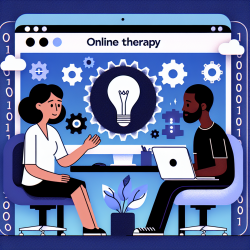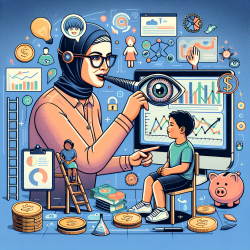In the ever-evolving landscape of education, emotional well-being has become a cornerstone for student success. As educators and therapists alike strive to create supportive environments, understanding and implementing emotion regulation strategies is essential. At TinyEYE, we are committed to providing online therapy services that empower schools with the tools they need to foster emotional intelligence among students. Drawing from the University of California San Francisco's Emotion Regulation Skills Manual, we present key insights into enhancing emotional regulation within educational settings.
The Goals of Emotion Regulation
The journey towards effective emotion regulation begins with understanding our emotions. This foundational step involves identifying and labeling emotions accurately, which helps in recognizing their purpose and addressing barriers to reducing painful emotions. By mastering this skill, educators can guide students toward emotional clarity.
Reducing emotional vulnerability is another critical goal. This involves learning techniques to decrease negative emotions while simultaneously increasing positive ones. By doing so, students can build resilience and navigate challenges with greater ease.
Finally, decreasing emotional suffering through mindfulness allows individuals to acknowledge and process their emotions without judgment or resistance. Encouraging students to act contrary to negative emotions can foster a healthier emotional state.
Essential Emotion Regulation Skills
- Identify and Label Emotions: Teaching students to recognize their feelings is the first step toward managing them effectively.
- Understand Emotional Functions: Emotions serve important roles; understanding these can help in fulfilling needs constructively.
- Reduce Negative Emotions: Encourage mindfulness practices that allow students to let go of suffering.
- Increase Positive Emotions: Engage in activities that promote joy and satisfaction daily.
Prevention: Staying Out of "Emotion Mind"
Prevention strategies are crucial for maintaining emotional balance. Schools can implement the following measures:
- Bodily Care: Promote regular health check-ups and adherence to prescribed medications when necessary.
- Nutritional Awareness: Educate students on the impact of diet on emotions; encourage balanced meals devoid of excessive sugar or caffeine.
- Avoidance of Non-Prescribed Substances: Discourage the use of alcohol and drugs.
- Sufficient Sleep: Establish sleep programs that ensure adequate rest for optimal functioning.
- Daily Exercise: Incorporate physical activities into the school routine to boost mood and reduce stress.
- Sense of Competence: Encourage students to engage in daily tasks that enhance their sense of control and accomplishment.
The Role of Mindfulness in Emotion Regulation
Mindfulness is a powerful tool for observing and describing emotions without becoming overwhelmed by them. By stepping back from emotional experiences, students learn to accept their feelings as part of their identity without letting them dictate their actions. Studies have shown that individuals adept at identifying their emotions recover from depression more swiftly.
Tackling Angry Feelings Constructively
Acknowledging angry feelings as valid indicators rather than reactions allows students to address underlying issues effectively. Educators can guide students in tracing anger back to its root cause, promoting healthier communication and resolution strategies.
Cultivating Positive Emotional Experiences
- Short-Term Positive Experiences: Engage in enjoyable activities regularly to boost immediate mood enhancement.
- Long-Term Positive Experiences: Encourage goal setting and relationship building for sustained happiness.
- Mindful Awareness: Focus on positive experiences, redirecting attention from negativity.
The integration of these strategies into school environments can significantly enhance students' emotional intelligence and resilience. For more information on these techniques, please follow this link.










